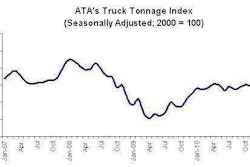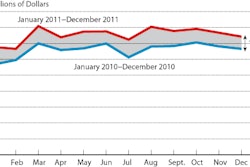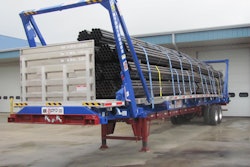Auxiliary anxiety
APUs come in many varieties, making spec’ing more difficult
Auxiliary power units are complex devices with a plethora of items to check and service – from oil level and mounting condition to coolant hoses and filters. However, the payoff can be huge.
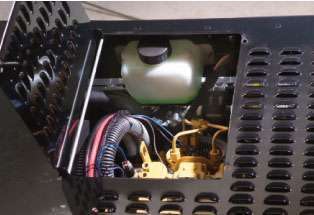 Tridako’s Power Cube APU has a service hatch to make it easier for drivers to check fluid levels during daily pretrip.
Tridako’s Power Cube APU has a service hatch to make it easier for drivers to check fluid levels during daily pretrip.An idling truck diesel consumes about a gallon an hour versus about 1/5th of that for an APU engine, even when it is cooling the cab and sleeper; in the larger engine, too much energy is absorbed by unnecessary air passing through, as well as friction. Even worse, post-2007 vehicles with a diesel particulate filter are likely to see active regeneration during prolonged idle.
An even larger payoff occurs when it comes to engine and oil deterioration. Fleet oil analysis has found that APU use can extend engine oil change intervals safely from 15,000-20,000 miles up to 30,000-35,000 miles and reduce a fleet’s idling percentage from 50 percent to 2 to 3 percent.
Maintenance matters
Choosing the right unit based on previous maintenance headaches is a critical head-scratching task. The Thermo King TriPac belt-driven automotive-style air conditioner compressor APU uses a direct-diesel fuel-fired heater during the winter; since this draws little 12V power, it can use the truck’s batteries so that the APU engine doesn’t have to run overnight when it’s cold outside. Its oil change interval jumps from 500 to 1,000 hours when using a Thermo King filter; its fuel filter returns separated water to the tank without intervention.
The Dynasys and Carrier APUs use electrically driven hermetic air conditioner compressors that run off 110V power and use resistance heating for the bunk, meaning the engine must run. In Carrier’s case, the engine heat keeps the truck engine warm; the same happens with the Thermo King unit if the APU engine is run to charge the batteries and supply 110V power to the cab via its inverter. The Dynasys unit, which employs a block heater, keeps the APU cooling system independent of the main engine to prevent APU coolant leaks from shutting down the truck while driving.
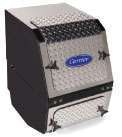 Carrier’s APU has quick-release fasteners so drivers and technicians can get inside to check fluid levels more easily.
Carrier’s APU has quick-release fasteners so drivers and technicians can get inside to check fluid levels more easily.The Kubota engine in the Centramatic APU has a remote auxiliary oil filter that allows engine oil changes to be extended so that the APU’s oil can be changed at the same time as the truck engine’s oil. The unit’s air conditioning system has quick disconnects designed for easy replacement of hoses and other parts without evacuation and recharge.
Tridako Energy System’s Power Cube APU uses a 2-cylinder Caterpillar diesel that requires an oil and filter change at 500 hours, which normally coincides with typical engine oil changes in the range of 20,000 miles; the company offers optional ELC coolant.
Going engineless
Engineless electrical energy storage systems also are available that can reduce APU-related maintenance. Thermo King’s TriPac battery system uses the company’s NXT absorbed glass mat batteries, while Idle Free Systems employs a high-capacity inverter to produce 120V AC power and uses AGM batteries that provide 8 to 10 hours of current draw.
AAP’s unit uses a lithium battery capable of 9 years of service, allowing the unit to provide 7,000 Btu/hr of air conditioning at 200 pounds.





